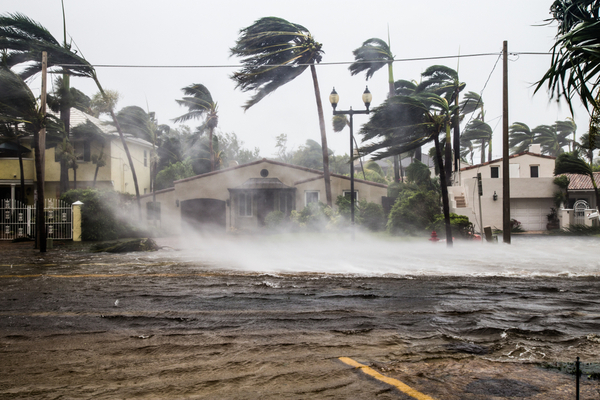AccuWeather meteorologists report that there is a chance for a new tropical storm south of Mexico to redevelop over the southwestern Gulf of Mexico during the opening days of the Atlantic hurricane season. Forecasters expect Tropical Storm Agatha, which formed in the East Pacific early Saturday morning, to move inland over Mexico with torrential rain and gusty winds in the coming days. Around June 1, the beginning of the Atlantic season, it could emerge over the Gulf of Mexico or the Caribbean Sea where further development will be possible.
“There is a low risk of tropical development from the southwestern Gulf of Mexico to the northwestern Caribbean somewhere in the neighborhood of June 2 to 5,” AccuWeather Senior Meteorologist Dan Pydynowski said, noting that any tropical potential could be influenced by what’s happening not far away in the Eastern Pacific basin. “It is possible that development in either of these two zones in the Atlantic basin could be spurred on by crossover energy from Agatha in the eastern Pacific.”
Even if Agatha is slower than expected to move toward land, enough shower and thunderstorm activity could slowly fester and allow a tropical system to congeal on the Atlantic side. “There is currently a significant amount of wind shear evident from southeastern Mexico to the southern Gulf and the western Caribbean,” AccuWeather Senior Meteorologist Mike LeSeney said. When wind shear is high or strong, it can prevent a tropical system from developing. That phenomenon would have to drop off first, and that is why development may not occur until sometime later next week, if at all.
But if something does form during those opening days of the Atlantic hurricane season, which direction might it take? “Tropical development is far from a certainty at this point,” AccuWeather Lead Long-Range Meteorologist Paul Pastelok emphasized, “but any tropical disturbance or organized system — should it form — would tend to be steered northeastward around an area of high pressure over the southwestern Atlantic.” For example, if a tropical disturbance forms near Mexico’s Yucatan Peninsula, it would likely travel toward Cuba, Florida and the Bahamas.
Water temperatures are generally above average, mainly in the 80s F, throughout this region of the Atlantic basin, plenty above the minimum threshold, which is about 78 degrees, for tropical development. Water temperatures are well into the 80s over the loop current — a deep, warm-water current that moves warm Caribbean water up from the Yucatan into the Gulf of Mexico — in the central and eastern Gulf of Mexico, Pastelok said. So any system that manages to move into or form over these warm waters would get a definitive boost.
Atlantic basin waters over the western Caribbean, the Gulf of Mexico and off the southern Atlantic coast of the United States are historically the main tropical development areas in June. Additionally, AccuWeather forecasters are also monitoring another area of the basin — off the southeast coast of the U.S. — a set of circumstances that could also lead to tropical development in early June. Under a setup involving a departing storm that’s brought days of showers and thunderstorms from the central U.S. to the Southeast and mid-Atlantic, another storm is expected to take shape in its wake not far off the Southeast coast over the coming days.
That storm is likely to remain stationary off the southeastern U.S. coast for a few days, but then, Pydynowski said, it could essentially change its character and potentially take on some tropical or subtropical characteristics. “This feature will need to be monitored late next week and beyond, but tropical development prospects appear to be very small at this early stage.”
With the end of May fast approaching tropical development prior to the official start of the Atlantic hurricane season is not expected this year, for the first time since 2014. However, AccuWeather meteorologists led by Hurricane Expert Dan Kottlowski still expect a well-above-average hurricane season for 2022 due to warmer-than-average waters and relatively low wind shear due to the lingering effects of La Niña. Four to six direct impacts are expected for the U.S., so we’d best batten down the hatches and get ready.
—
Photo Credit: FotoKina / Shutterstock.com
